AUTOMATED TYRE MANUFACTURING: NO TURNING BACK
- By Sharad Matade & Juili Eklahare
- October 14, 2022
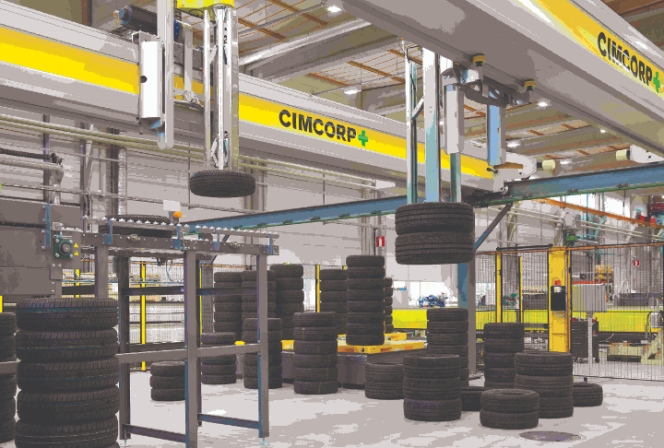
There couldn’t be any industry that isn’t implementing, or at least knowing about, automation. And if there’s actually one, then it has probably been living under a rock. The tyre industry has already opened its doors to automation, and this helps make tyre manufacturing more sophisticated and reliable. The tyre manufacturing process itself has been experiencing constant changes – from different tyre sizes and constructions to targeting less usage of energy. Automation must be on every tyre company’s to-do list, if it hasn’t adopted it already. Don Heelis, Sales Manager, Cimcorp, gave Tyre Trends more insights on the different aspects of automation in the tyre industry and its absolute requirement, when we met him at the Tire Technology Expo 2022 in Hannover, Germany. Read on…
The philosophy of tyre manufacturing has changed dramatically. A part of the change in that philosophy relates to automation implementation in the tyre manufacturing process. However, we also find more technical perspectives being adopted and taken into account at new, modern tyre factories today.
This technical perspective can be considered to be coming from a few different areas, one of them certainly being from the actual production part of the tyre factory. Therefore, with production machinery, mixers, extruders and tyre building machines, the level of technology being implemented in these processes is increasing. Moreover, these processes are getting more sophisticated.
The other aspect of this is integrating the production across all the different areas (another factor for the dramatic change in the modern tyre factory). In the past, the different areas of production were not necessarily well connected. However, today we see them getting connected a lot more – and this is being driven and enabled by technology.
This is where companies like Cimcorp come in – who happen to provide material handling and automation technology so that different tyre manufacturing processes are better integrated.
Explaining this, Don Heelis, Sales Manager, Cimcorp, said, “When you produce your work in process, what you’re producing is in synchronisation with what’s being produced in other areas of the factory. This helps minimise the work in process and have a manufacturing process that’s more efficient.”
Going the modular way
But how does one integrate different machines and processes in the plant with all the different machines and manufacturing processes involved? Heelis let us in on this.
“The trick is to implement the automation and connectivity in a modular way,” he revealed and went on, “That way, the connectivity is physical and mechanical but involves software as well. Thus, we take an approach where the modules are flexible and can connect to various inputs and outputs; however, the module is in itself standardised. Hence, the modules can work for different factories – only the interconnection needs to be flexible.”
The green tyre
While implementing automation, one, of course, would want to implement it where they get the biggest value. “Traditionally, that has been in the palletising area – in managing and handling the finished product. Basically, palletising, storing and retrieving the finished product,” Heelis informed us and continued, “This is where everyone has traditionally looked in the past. However, a lot of focus has been put on the green tyre area in the past 10 years. That includes green tyre handling, storage and retrieval and its automatic delivery to the curing process.”
A green tyre is work in process – simply put, a tyre that has not been cured. “A green tyre is made up of a number of components. It’s built on a tyre-building machine,” Heelis further told us. “Once a green tyre is built, it is buffered, followed by being cured – and automation machines are required in order to do this. Hence, this is a key element of the modern tyre factory.”
He added, “This has been an area of key focus where productivity and simplicity can be gained. In fact, the whole process can be done with less plant floor space. Ultimately, factories that want to be competitive have to implement automation technologies in that area.”
Increased efficiency
There are many brownfield factories out there that have to modernise and be viable for the future. One of the key areas that they need to modernise and automate in is green tyre handling. Heelis asserted, “By having an automated storage and retrieval system, one can track and trace all of the work in process. Plus, one is able to store in a manner that maximises the quality of the green tyres. And then, one can deliver them from the storage system to the curing process in a very systematic and accurate way. This way, when a particular green tyre is needed in the curing area, it can be delivered there in the appropriate amount of time.”
“In this methodology, when the green tyre arrives at curing, it is at that point in time when it is needed, and the production does not have to stop,” Heelis further shared. “If this can be achieved, then the curing process can be run more efficiently; the efficiency can go from 80 percent to over 95 percent. In theory, one can increase the output of their factory by 10 percent. In such a case, one can imagine how many tyres can be produced in a factory by following this methodology.”
Automation – its role during the pandemic and inflation
While automation tends to bring in efficiency, how have companies managed to keep up their competence and productivity during the thorny period of the Covid pandemic? The pandemic has definitely brought some insights to the tyre industry from a management point of view, like it did to many other sectors. According to Heelis, automation has come to the rescue of the tyre industry in the pandemic as well.
“One important thing that the industry learnt from the pandemic was that it has a risk to its ability to produce products,” he mentioned and went on, “The absence of automation will make any company in the industry highly dependent on the labour force, which might not be available to keep the production going. On the other hand, with automated processes, a company is less at risk to events like a pandemic.”
Another issue we are dealing with right now in the global economy is inflation. Inflation equals to costs going up – from the cost of materials to the cost of labour. “Nonetheless, a company can mitigate some of the impacts of inflation if it has embraced automation. In fact, the ones who automated their brownfield factories three to four years ago are in a much better position today than their competitors who had not,” Heelis pointed out and went on, “This is because the former can mitigate some of the inflation costs, is less dependent on the workforce and is able to produce better-quality products – and at a higher level of efficiency at that. We know that there is a tremendous shortage of people in the workforce in the US right now. Therefore, automated companies have a significant competitive advantage.”
From the tyre industry’s challenges due to the pandemic and inflation, we turned to the challenges Cimcorp itself faces on the commercial side. Heelis responded that, commercially, the current challenge for them is being a low-cost, high-quality producer – which one has to be in order to compete in the market. “Furthering this challenge is how we become a low-cost, high-quality producer and stay that way. And from our perspective, the way to get there is through innovation and technology,” he stated.
Automation in the Asian tyre industry
CIMCORP opened up an office in India roughly three years ago. With its presence in the country and Asia, Heelis told us that the tyre companies in Asia are no stranger to automation and are implementing it. “As a move forward, the mentality is that if you want to be a world-class manufacturer and build a new factory, then you build the factory with automation. And this is a global perspective,” Heelis asserted.
Cimcorp’s customers in Asia range from traditional tyre manufacturers to new manufacturing entrants in the industry, so it’s a mix. Throwing further light on this, Heelis said, “We all know the traditional manufacturers like Bridgestone, Michelin, Goodyear, Continental and more. But beyond these, there are new companies emerging. And these new companies have an advantage in some ways because they are not constrained by the old ways of thinking. They are forward thinking, with a clearer mindset to do things in the current environment – the environment of automation and technology.”
“Moreover, the manufacturers who don’t invest in automation, and try to run the company with practices that were developed in the 1960 and 70s, will not be able to survive or compete,” he further added. “Their market will eventually consider them to be non-competitive, non-global and unable to produce the quality expected of them.”
Cimcorp has plans for India as well. “Our strategy is to continue to grow our business in India with the domestic tyre manufacturers, and we have been successful at that,” Heelis shared and went on, “When I say domestic, that goes for manufacturing facilities within India, from Apollo Tyres to MRF to JK Tyre to Goodyear to Michelin. Thus, we plan to continue to build our business with those factories and customers from an automation perspective, and then from a full customer service point of view.”
The other aspect comes to brownfield factories. Heelis averred, “With brownfield factories, whether in North America or Asia, the cost of automation is the same; there may be different payback scenarios between the two. However, it stands true that no matter where a company is present in the world, if it is operating a brownfield factory, then it needs a strategy to modernise. And the strategy to modernise is based on implementing automation.”
Automation in brownfield factories – what will it take?
The strategy to modernise when automating a brownfield factory is especially challenging in an already existing system. Therefore, when automating a brownfield factory, one of the most important considerations is to not interrupt their day-to-day production, Heelis cited. He mentioned that the factory has to continue making its certain number of tyres each day. Hence, a strategy that enables the factory to do that is needed – while concurrently implementing automation there.
“Besides, when you implement automation, you have to be able to do it in a standardised way,” Heelis further enlightened and continued, “This can be done with the help of flexible automation modules that can work in a lot of different scenarios. Therefore, you can deal with different brownfield factories depending just on how you arrange your automation modules. Thus, you can come up with a custom solution for every different brownfield factory out there with the help of a modular approach and on the basis of how you connect those automation modules together.”
Service provided
From providing standard modular systems to hardware to software, Cimcorp strategically has a service aspect to its business – Success Services. Therefore, the approach from its service side is to enable its customers to be as successful as possible.
“That could be achieved by providing a 24/7 support. So if the customers contact us due to an issue they are facing in the solutions provided by us, we are available at any time of the day or night to support them,” Heelis revealed and added, “We can do it remotely. In fact, as technologies emerge further, we’ll see how we can do this more remotely with virtual techniques. Here, their serviceperson could be using special tools, which enables our people (who are remote) to actually be in virtual situations in our customers’ plants. In such wise, we can be more responsive and be as if we are in place in real-time in order to provide a service.”
Tyre warehouse automation or manual operation – making the choice
Nevertheless, Cimcorp does not just stop at its 24/7 services or providing its automation solutions for tyre manufacturing processes. It goes beyond that – to the finished product warehouses. However, interestingly, that depends to a degree on which part of the world the automation is needed in; while some areas will need automation that is well advanced, some areas will use a more manual operation.
Heelis explained, “There are some key factors that determine whether the facility/area in question needs to be automated or not. For example, the cost of real estate. If it’s a manual operation, then that typically involves a very large warehouse, say around 100,000 sq mt.”
“For automating, on the other hand, you require lands that are much smaller,” Heelis further highlighted. “For instance, land is very expensive in Japan. Thus, one wouldn’t want a very big footprint warehouse over there. Which means, you go vertical wherever land is expensive.”
“On the flip side, land is very cheap in some areas and inexpensive to build the generic building (like in some areas of the US). So there is less incentive to go vertical with automation there,” he added. “But there might be other factors that could dominate.”
Choosing automation over manual operation – why?
While some main factors do influence the decision if a warehouse is going to be a fully automated one or a semi-manual one, an automated one is always preferred. For clear reasons.
“The benefit of an automated warehouse is that everything is extremely well controlled,” Heelis informed. “What’s more, you have complete control of your product – you know exactly where it is, how much of it you have and you can get on-demand access.”
“As for a semi-manual warehouse, there are fork trucks, people moving things around and putting them in different storage locations,” Heelis further clarified. “This process is much more manual, involves a lot more interaction and is time consuming. Therefore, you have much less control over the process.”
Automation – a need not to be confused as a luxury
The automotive industry has been one of the earliest industries to adopt automation. So it’s high time that tyres, an integral component of any vehicle, did so too. It’s clear that automation, today, is not a luxury but a need. No company can afford to not have it. No tyre company must be limited to older technologies, and they must invest in automation for the long term. This would not just help tyre manufacturers meet their customers’ demands without any delay, but also help modernise the industry with the world’s rapidly changing technologies.
Dunlop To Exhibit SENSING CORE Technology At CES 2026
- By TT News
- December 22, 2025
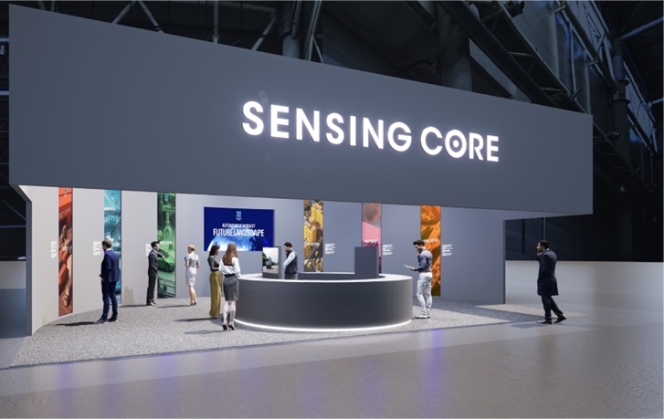
Dunlop will present its proprietary SENSING CORE technology at the Consumer Electronics Show (CES) 2026 in Las Vegas coming January. The prominent global trade event, scheduled for 6–9 January 2026, will serve as the platform for Dunlop to highlight the system's role in advancing safety for future autonomous mobility.
Central to the booth will be a display focused on evolving SENSING CORE into a broader technology platform. This exhibit will detail collaborative technical verifications with T2 Inc., a firm developing hub-to-hub autonomous trucking services. It will also feature integrated fleet service demonstrations combining the sensing technology with AI solutions from Viaduct, Inc., a US-based company acquired by Sumitomo Rubber in August 2025. The company plans to leverage this acquisition from 2026 to efficiently expand predictive maintenance services for fleet operators globally, including in Japan and European markets.
Further exhibit segments will immerse visitors in six future mobility scenarios, spanning logistics, public transportation and infrastructure. The company positions SENSING CORE as a foundational technology for safer autonomous driving, capable of gathering critical data on tyre and road surface conditions. This information is intended not only for direct vehicle control but also for cloud-based integration with broader societal data streams. Ongoing development efforts are aimed at supporting the realisation of a safer and more advanced mobility experience for all.
Getting A Grip On India’s Tyre Waste
- By Gaurav Nandi
- December 19, 2025

India’s mounting tyre waste problem has found a determined challenger in Home Zone Rubber Solutions, a young but ambitious company from Vapi, Gujarat. Founded just four years ago by stainless-steel-industry veteran Jitendra Agarwal, the recycler has quickly scaled to processing more than half a million scrap tyres annually with plans to double capacity through an upcoming IPO. Armed with cutting-edge Danish Eldan technology and a vision that blends environmental responsibility with industrial innovation, Agarwal is positioning Home Zone not just as a recycler but as a pioneer of India’s circular economy in rubber.
Home Zone Rubber Solutions, headquartered in Vapi, Gujarat, is rapidly establishing itself as one of India’s foremost tyre recycling companies. Established just four years ago by Managing Director Jitendra Agarwal, the company’s roots trace back to a legacy in stainless steel manufacturing. However, post-pandemic, Agarwal saw an opportunity to pivot towards environmental sustainability through tyre recycling owing to its immense potential but significant challenges.
Speaking exclusively to Tyre Trends, Agarwal said, “Our family has always been in the stainless steel business, but I have long been passionate about environmental issues and recycling. When the opportunity presented itself after lockdown, we grabbed it with both hands.”
Today, Home Zone processes around 5,000 tonnes of scrap tyres every month, which translates to over half a million tyres annually. Agarwal shared that with an upcoming initial public offering, the company plans to double this capacity, targeting recycling of up to 10 million scrap tyres annually.
 “This is a huge achievement because tyres are among the most hazardous wastes worldwide. They can take 150 to 200 years to decompose if left unchecked. They pollute landfills and oceans alike, so taking millions of tyres off the roads and recycling them is vital to protecting our environment,” Agarwal explained.
“This is a huge achievement because tyres are among the most hazardous wastes worldwide. They can take 150 to 200 years to decompose if left unchecked. They pollute landfills and oceans alike, so taking millions of tyres off the roads and recycling them is vital to protecting our environment,” Agarwal explained.
INNOVATIVE METHODOLOGY
At the heart of Home Zone’s process is a sophisticated tyre recycling line sourced from Denmark, known as Eldan. This machinery stands out as one of the most advanced globally, capable of reclaiming 99.9 percent crumb rubber granules from shredded tyres, claimed the executive.
“Separating components like steel is fairly straightforward, but the fibre and rubber separation is incredibly complex. Our line is the only one currently in India with a full Eldan setup, and it delivers unparalleled efficiency and quality,” Agarwal said.
The crumb rubber generated is classified in mesh sizes in granular levels ranging from 5 up to 20 mesh currently. The company is working towards finer mesh granules going up to 40 and eventually 80 to 120 mesh, which are essential for manufacturing new tyres from recycled material. Agarwal notes that this progression is gradual given the technological challenges of grinding tyres to such fine granularity in a controlled environment.

The applications for crumb rubber extend beyond new tyres. The company’s crumb rubber is widely used in diverse sectors including sports turf grounds, anti-slip tiles, automotive components, conveyor belts, industrial footwear and infrastructure projects.
The company maintains a research and development team, including experts in robotics technology, to ensure product quality and innovation. “As we move into finished products ourselves, quality testing and consistent innovation are vital,” Agarwal stressed.
One particularly unique product is the cow mat, exported from India to dairy-producing countries worldwide. Made from crumb rubber, these mats improve cow comfort, reduce blood pressure of animals and consequently increase milk production. This innovation exemplifies how recycling can impact even agricultural practices.
MARKET WATCH
While Home Zone currently primarily serves the domestic market, exports are an important growth area. Plans include selling crumb rubber and finished mats to markets in the Middle East, Europe and China. Agarwal sees China as a significant opportunity, especially for finished rubber products rather than just raw crumb rubber.
To support this expansion, the company has identified a 25-acre land parcel near Mundra port, approximately 9.5 kilometres from the port itself. This facility aims to be a fully integrated recycling and manufacturing hub, where crumb rubber will be processed into finished products before export. The target for beginning operations is late 2026.
Furthermore, while India remains the third largest generator of scrap tyres globally, Agarwal pointed out that the supply of these tyres for recycling is fragmented and inefficient, forcing Indian recyclers to import scrap tyres from the US and Europe, often at lower costs due to government subsidies and more streamlined collection systems abroad.
To tackle this, Agarwal has launched Re-Tyre Bazar, India’s first organised scrap tyre collection network. Initially rolling out centres in states like Tamil Nadu, Telangana, Rajasthan, Maharashtra and Madhya Pradesh, this initiative aims to consolidate the fragmented supply chain and enable recyclers to source Indian scrap tyres exclusively in the near future.
“If we can organise this chain effectively, we won’t need imports except as a bonus. That would validate the model and mark a major step forward for the Indian recycling industry,” Agarwal said.
Re-Tyre Bazar operates as an independent company and is intended to serve the entire Indian recycling sector, rather than being exclusive to Home Zone Rubber Solutions.
FOCUS VIEW
Agarwal highlighted that about 70 percent of Indian scrap tyres come from the truck and bus segment. “TBR scrap tyres generally lend themselves to higher quality recycling applications, compared to passenger car tyres,” he explained. This focus area presents significant opportunity for the company as it scales production and refines crumb rubber quality.

Addressing common misconceptions about tyre quality, he stated, “Many believe that American and European tyres are superior, but it’s not true. Indians may even have a 5 to 10 percent advantage due to how tyres are used and road conditions.”
He was also candid about rumours that some importers misuse scrap tyre imports licenses, selling raw material rather than using it in production. “Such misuse is limited to a small minority, but government agencies must enforce regulations strictly to protect industry credibility,” he said.
On the regulatory front, Agarwal views government initiatives such as Extended Producer Responsibility (EPR) as positive developments that place recycling obligations on tyre manufacturers. However, careful enforcement is needed. He also advocates for consumer awareness campaigns and incentives like green labelling for recycled products.
“Consumers want environmentally friendly choices. A green label on products made from recycled rubber could boost demand and support the circular economy,” Agarwal noted.
FUTURE PROSPECTS
The upcoming IPO is a major step towards funding Home Zone’s expansion. Public filings indicate the company aims to increase production capacity from around 57,000 metric tonnes annually and invest in new machinery and facilities.
“We expect the next decade to be very exciting for the industry,” Agarwal said confidently.
Reflecting on the company’s environmental mission, Agarwal concluded, “We inherited this planet from our parents and grandparents. If we cannot leave it better, let us at least leave it as we found it.”
- Ian Andrews
- NTDA
- National Tyre Distributors Association
- National Tire Conference and National Tire Awards
Charting A New Course For NTDA
- By Gaurav Nandi
- December 12, 2025
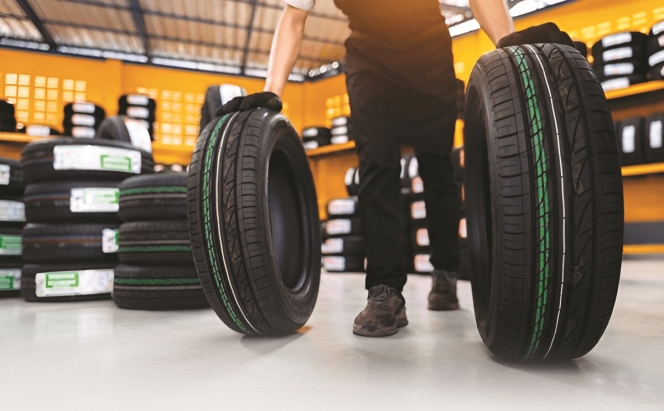
Ian Andrews steps into the role of NTDA Chief Executive at a precarious moment for the UK tyre industry, where skills shortages, demographic shifts and mounting environmental pressures threaten to outpace the sector’s readiness. New to tyres but not to membership organisations, Andrews must prove his ability to turn fresh perspective into actionable solutions bridging gaps in recruitment, diversity and sustainability while convincing members that the nearly century-old association can adapt quickly enough to safeguard its relevance.
Ian Andrews, the newly appointed Chief Executive Officer of the National Tyre Distributors Association (NTDA), has embarked on a mission to address urgent challenges within the UK tyre sector, undertaking a comprehensive strategy to tackle recruitment issues, enhance member engagement, promote collaboration and advance environmental sustainability.
Coming from two decades of senior leadership in membership-based organisations but new to the tyre industry itself, Andrews brings a fresh perspective combined with seasoned leadership skills to the nearly 100-year-old trade association.
Upon assuming his role, Andrews emphasised a grounded approach focused on learning directly from NTDA members. “My immediate priorities are to understand the challenges and opportunities that face the tyre sector here in UK, principally, but globally as well,” he shared.
 Approaching the role without preconceived notions, he aims to listen and respond to member feedback. Early indications point to recruitment and careers as pressing issues. “Careers and recruitment seem to be one of the early areas of work that we need to focus on. There are significant recruitment issues here in UK, not just in tyres but across the whole motor vehicle sector,” said Andrews during the exclusive interview with Tyre Trends.
Approaching the role without preconceived notions, he aims to listen and respond to member feedback. Early indications point to recruitment and careers as pressing issues. “Careers and recruitment seem to be one of the early areas of work that we need to focus on. There are significant recruitment issues here in UK, not just in tyres but across the whole motor vehicle sector,” said Andrews during the exclusive interview with Tyre Trends.
TACKLING GAPS
The UK tyre sector faces a looming demographic shift with a substantial number of experienced professionals expected to retire over the next decade, risking a critical loss of institutional knowledge and technical skills.
Andrews warned, “The sector has got a significant number of people who will retire in the next 10 years. So there’ll be a significant loss of knowledge and skills.”
While larger companies have training and HR departments to manage recruitment and development efforts, smaller businesses face a heavier burden. “They are doing it themselves, and if you’re employing somebody new, then it’s a huge commitment to train and develop that person until they start generating revenue and making a return on the investment,” he explained.
Recognising the sector’s traditionally male-dominated nature, Andrews stressed the imperative of building a more diverse workforce. “We need to look at getting a better and more diverse workforce. Moreover, any business should be reflective of the community it’s working in. If you’re in an ethnically diverse community, your workforce will be best when it’s ethnically diverse,” he noted.
Yet he acknowledged the cultural shift required will take time and that’s not going to happen overnight.
Furthermore, Brexit has complicated recruitment by reducing access to talent from Europe, shifting the focus predominantly to UK-based recruitment. “Most of the tyre sector focus is on UK recruitment, perhaps more so now after Brexit,” Andrews noted.
Despite these constraints, his message was clear: “If we keep doing what we’ve always done, we’ll end up with what we’ve always had. So we need to look at doing different things. Reaching different groups of people.”
To address the skills and professionalism gap, NTDA has expanded its tyre technician licensing schemes significantly. Andrews reported robust uptake with over 16,000 technicians licensed by the NTDA.
This growth is particularly notable in the past two years. Acknowledging the specialised skills needed in emerging technologies, he highlighted the introduction of licensing for electric vehicle tyre (EV) technicians. “The whole electric vehicle is bringing a new plethora of challenges and opportunities. It’s a different skill set. Everything is different in EVs,” he said.
ENGAGING MEMBERS
Member engagement and retention stand as foundational pillars for Andrews’s leadership as well. He aims to increase members’ awareness of
NTDA’s benefits and encourage their active participation. “Often, members pay their membership fee but don’t really explore all the member benefits,” he observed.
Plans include surveying members on their benefit awareness and usefulness while exploring additional services that may be introduced. To foster greater connection, Andrews is looking at enhancing local engagement through regional events across UK, alongside leveraging digital platforms.
He mentioned, “We run large national events in October, including our National Tire Conference and National Tire Awards, which are very well supported. But we need to explore how else we can engage with members on a more local basis for physical events but also on a digital basis.”
His previous experience includes organising half-day digital forums with speakers and interactive participation, offering participants the flexibility to attend live or watch recorded sessions later.
Collaboration within the sector forms a cornerstone of Andrews’s strategic outlook. While mindful and cautious of anti-competitive regulations, he believes substantial benefits can come from sharing resources and best practices, especially on recruitment and sustainability challenges.
“There’s always greater advantage in collaboration than there is in competition. Who is doing it well? What are they willing to share? What resources do they have that might be made more widely available?” he asserted.
At the same time, he acknowledged the necessity of protecting commercially sensitive information: “There will always be things that are commercially sensitive and need to be kept such, but that’s fine. Let’s collaborate on the 90 percent that isn’t commercially sensitive and keep the 10 percent that is.”
ENVIRONMENTAL STEWARDSHIP
Environmental stewardship and sustainability have emerged prominently on the NTDA agenda. Andrews described active engagement with the UK Environment Agency regarding the management of end-of-life tyres.
“We’re engaged with the agency that is responsible for where end-of-life tyres end up, making sure that they end up in the right place at the right time and don’t clog up our rivers, canals and green spaces,” he stated.
Growing government interest in tyre runoff impacting watercourses may further intensify oversight. “There’s government interest in where runoff from tyres is ending up in the water courses,” Andrews noted, emphasising the importance of proactive dialogue. “With all aspects of working with government, it’s about getting to them before they get to you.”
He committed to openness and transparency if issues arise, stating, “If there’s an issue, then be upfront and open that there’s an issue and we’re working on it and there is a solution.”
Looking to the future, Andrews identified his plans for NTDA’s next three to five years that include member growth, recruitment and environmental awareness. “Internally, it is driving member engagement and member value and therefore driving up member growth,” he shared.
Externally, recruitment and environmental matters are key concerns. Noting that larger companies typically have sustainability specialists, Andrews highlighted the need to support smaller businesses struggling to navigate sustainability practices. “Helping the whole sector regardless of the size of the business is important,” he said.
Throughout the interview, Andrews repeatedly underscored the fundamental role of the tyre industry in public health and safety. “The tyre sector is fundamentally about health, safety and well-being,” he emphasised.
“You wouldn’t put your most precious things anywhere without some assurance that they’re going to be safe. Let’s not put our partners, children, parents into vehicles without some assurance that the tyres are going to do the job that’s expected of them,” he asserted.
Based in Halesbury, Buckinghamshire, Andrews expressed enthusiasm for leading the NTDA forward. While new to tyres, he is confident in his ability to learn quickly with the board and executive council’s support. “The tyre stuff I will learn. When I joined the BPCA, I knew nothing about pest control. Now I’d like to think the same will be true of tyres. It’s all learnable,” he said.
He also stressed his readiness to bring expert colleagues to discussions, for example, when facing government ministers, to ensure the expertise needed is present.
As he takes charge of NTDA during a time of transformation, Andrews seeks to position the association as the collective voice of the tyre sector, delivering professional standards and fostering a collaborative, diverse and sustainable industry that prioritises safety and well-being.
Fornnax Inaugurates 12-Acre Global Hub For Recycling Innovation
- By TT News
- November 27, 2025

Fornnax has officially launched one of the world's largest integrated hubs for recycling innovation: a New Product Development centre and demo plant spanning over 12 acres. This facility is a critical milestone in the company's strategic vision to become a global leader in recycling solutions by 2030. It is designed to accelerate the advancement of recycling technology through a comprehensive, customer-focused approach.
The centre’s core function is its New Product Development framework, which is built upon a meticulous Gate Review Process. This system ensures precision from conception to completion. The journey begins with market research and ideation from the Sales and Marketing team, followed by a strategic review by the Leadership Team. The Design Team then creates detailed plans that are evaluated by Manufacturing, Service and Safety teams. After final approval, a functional prototype is built and subjected to a rigorous six to eight-month validation phase. The process concludes with design optimisation for mass production, officially launching the equipment for the global market. This method not just upgrades Fornnax's shredders and granulators – enhancing their capacity, energy efficiency and operational availability to 18–20 hours per day – but also validates the equipment for up to 3,000–15,000 hours under real-world conditions
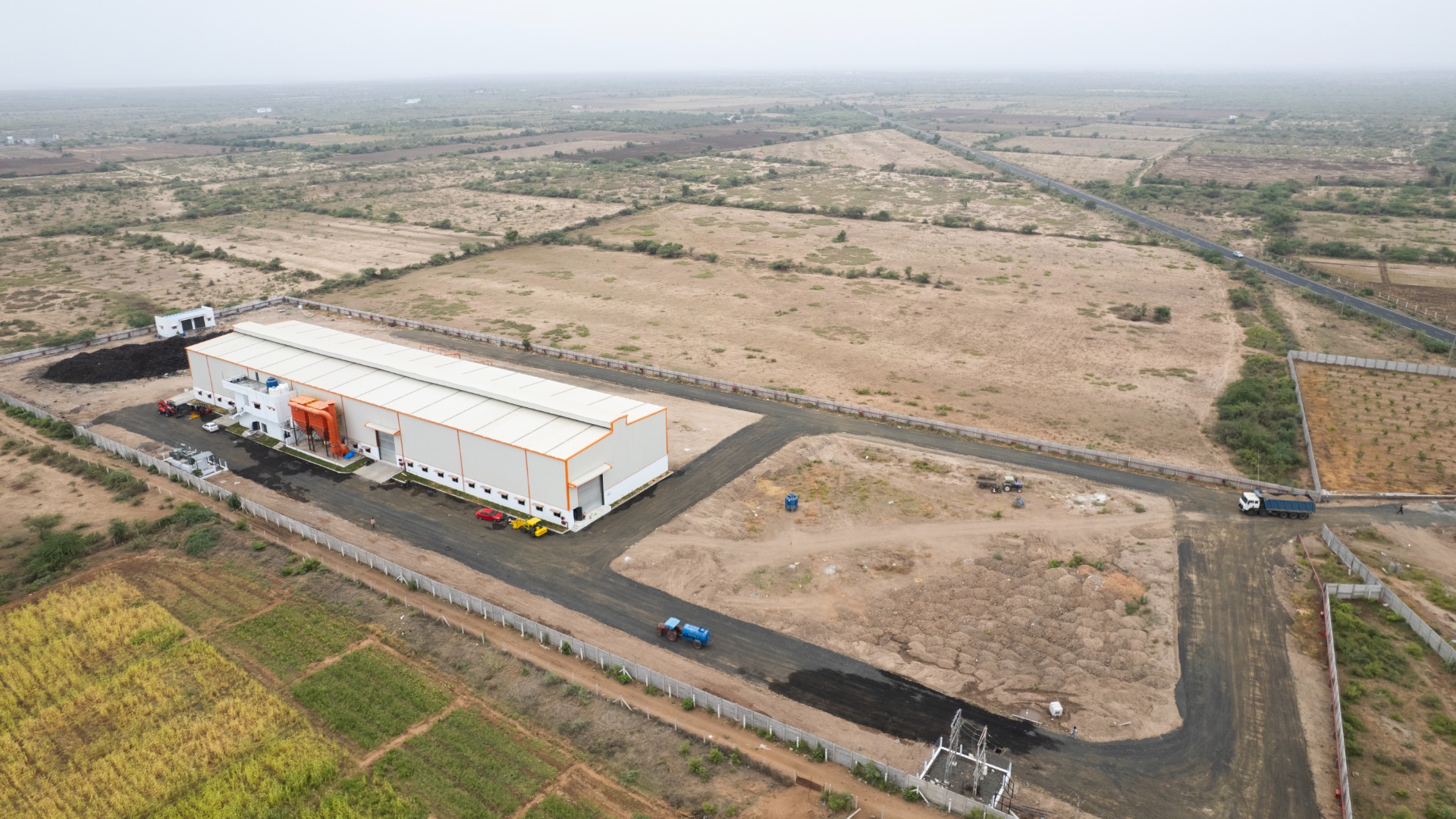
A key feature of the facility is its open-door policy for clients. Customers can bring their specific materials to the demo plant to test equipment performance across various machines and conditions, providing a risk-free environment for informed investment decisions. The centre will also drive research into emerging recycling applications, such as E-waste, cables and lithium-ion batteries, where specialised engineering teams will conduct feasibility studies to design tailored solutions.
Beyond technology, the facility includes an OEM training centre dedicated to developing a skilled workforce. The programme trains operators and maintenance engineers, who gain hands-on experience before being deployed to support Fornnax's customer base. The company will also deliver comprehensive corporate training to domestic and international clients, empowering them with the expertise for optimal plant operation and maintenance. By uniting R&D, testing and training under one roof, Fornnax is establishing a powerful foundation to scale its offerings and lead the next generation of recycling technology.
Jignesh Kundariya, Director and CEO, Fornnax, said, "Innovation in product development is the key to success of becoming a global leader. With this new facility, we now have the speed, flexibility and controlled environment to design, test and validate new technologies in just six to eight months, something that would take significantly 4–5 years at a customer site. Each machine will undergo validation according to global standards, with every critical part and assembly rigorously tested under Engineering Build (EB) and Manufacturing Build (MB) protocols. Our goal is to empower customers with clarity and confidence before they invest. This facility allows them to test their own materials under real-world conditions, compare machines and see results firsthand. It’s not just about selling equipment; it’s about building trust through transparency and delivering solutions that truly work for their unique needs.”


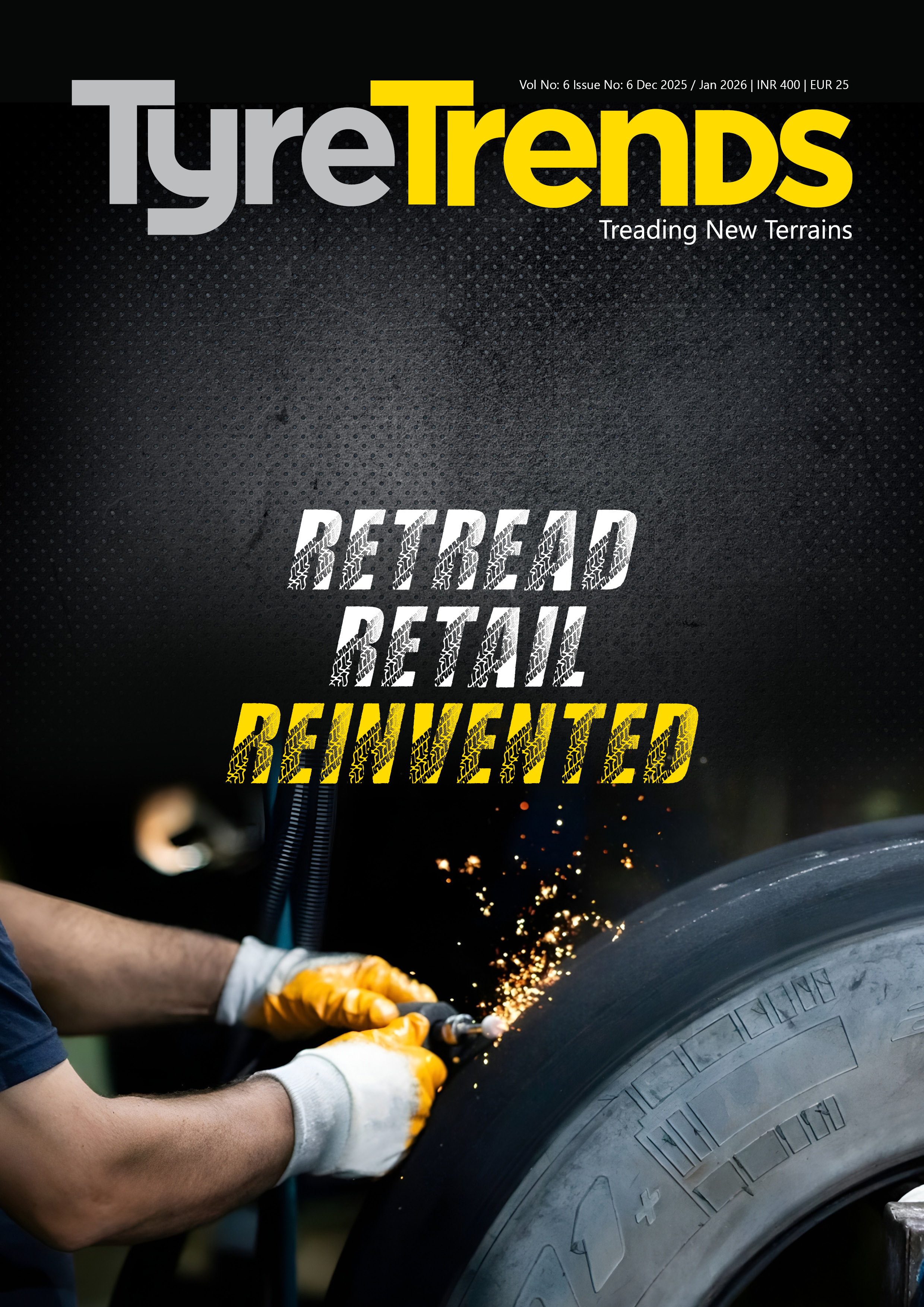




Comments (0)
ADD COMMENT